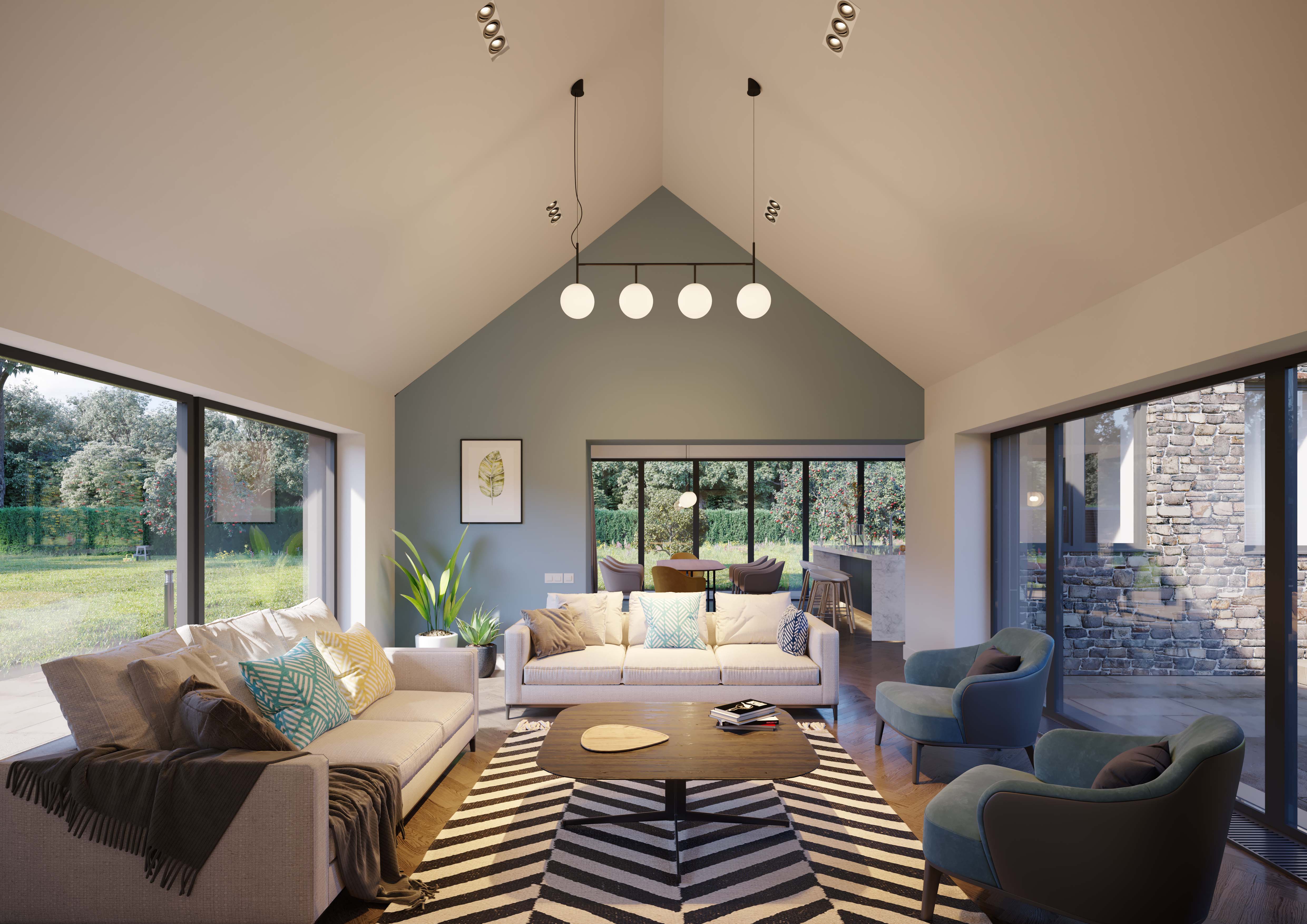What are the steps to building a house?
Many self-builders we have spoken to ask the same question – where do I start? The stages outlined below are there as a guide as the ‘typical’ route. Once you have a good design and management team behind you, they may advise that an alternative path could be best for your objectives. In truth these stages overlap and you will likely find that you keep coming back to them, but I hope this provides a rough guide for the main areas of consideration when embarking on a self build.
Step 1 – Set budget and research funding
Most people start with some desktop research, looking online about how much a new build house costs. Setting a budget will be a process of learning how much things are likely to cost, set against what you want from your home (your brief) e.g. number of bedrooms, eco-credentials, complexity of design, choice of materials and finishes.
While online articles and resources are a good starting point, I’d always recommend speaking to professionals throughout the self-build process and even at this early stage. An architect and/or quantity surveyor can help to guide you in planning your brief and budget even prior to finding a plot.
You should make initial assessments about affordability. If you plan to get a self-build mortgage, now is a good time to speak to brokers to get an idea of what would be realistic for your circumstances, before you start making offers on plots of land.
Step 2 – Find your plot
Some may say that this should be the first step. However, your budget and funding will have implication on your plot choice and location. There are some areas in the UK which have more plots that are more affordable and potentially where the cost of building is lower too. So, at this point you will decide the extent to which you are led by your budget versus location and project brief.
Sites, including PlotSearch, PlotFinder, and PlotBrowser are good places to start looking. Word of mouth can also be used as a reliable source; network with local residents in your current and future community to let them know you are looking for property in a specific area.
As with finance planning, you may wish to consult an architect to look at potential sites with you, prior to purchasing the site. An outline feasibility study at this stage can highlight any critical site constraints, potential issues or conditions that might hike up your costs, as well as design opportunities.
Check the planning permission the plot comes with (and its expiry date!) Most often, a building plot would come with Outline Planning Permission or Permission Principle.
Step 3 – Arrange funding
If you require a self-build mortgage, it’s common to arrange funding at this point, as many lenders require you to have bought a plot already.
Step 4 – Consider a building route
The two main routes are Design and Build or Traditional. We explain the difference and pros and cons in this article.
In summary:
Design and Build
One-stop-shop. The construction company you engage, before the design phase of your project, will have their in-house or connected architect/designer.
- You get an upfront cost (not necessarily saving you money, but greater cost certainty) at an early stage.
- The overall process is usually quicker.
Traditional
You appoint your own independent architect. Following a detailed design process, you will get competitive quotes from builders for construction.
- Your architect works for you, not your builder.
- It’s generally considered that the main benefit of the traditional route is higher quality and design flexibility (e.g. to change your mind as the project progresses).
Step 5 – Engage an architect/design team
At Design for Me we have self-build architects all over the UK. Some work in the traditional way (where you employ them independently of the builder) but many also work as part of a Design and Build arrangement.
We would always recommend having a contract with your architect to set out what services they will undertake for you. Typically, you would also pay them in stages as the different phases of the project complete.
Step 6 – Planning advice and submission
Your architect is best placed to help you navigate the planning process. You may consider paying for pre-application advice from the local planning office prior to submitting your application. Read our article: Should I pay for pre-application advice?
Step 7 – Paperwork
The following list is not exhaustive but your architect can advise, with your particular circumstances, on what will be required. Your architect can help you all the statutory consents and administration you will need to start work.
- Planning permission
- Conservation area consent or listed building consent where applicable
- Building control approval
- Contracts for all professionals appointed
- Construction contract
- Self-Build insurance
Step 8 – Appoint your builder
This step is only applicable if you are following the traditional route. After your architect has prepared a detailed design and specification (tender documents), you can go out to tender. This means sending the tender documents to a number of contractors – and within a set time period – receive their bids. Your architect will help you check through the bids and make a decision about your choice.
Step 9 – Construction phase
This is the stage that most people think of when imagining their self-build project – and worry that this is when all the problems start. However, the construction phase can be orderly, and smooth-sailing, IF the project up to this point has been carefully designed, planned and costed. For this reason, a good architect / design team are worth their weight in gold.
Find out roughly how long you can expect your self-build to take:
How Long Does is Take to Build a House?
How to find an architect for your self build
Design for Me helps people find the best residential architects for their home building or renovating projects, all over the UK.
- Quickly see who’s interested in your job.
- Create a shortlist.
- Invite up to three for a no-obligation consultation.
Emily
Design for Me


